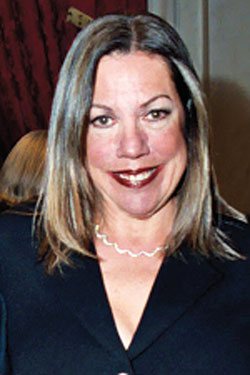October 1, 2011 (Vol. 31, No. 17)
Mary Ann Liebert
How time flies. It seems like yesterday when, in a corner of my living room, I visualized a new publication for an emerging and promising area of the life sciences. This began the beginning of a wonderful and continuing adventure.
Genetic Engineering News (which quickly became known as GEN and has since evolved into Genetic Engineering & Biotechnology News) was the first publication in this nascent field that later became known as biotechnology, a word coined by Nelson Schneider of E.F. Hutton. It was an exciting time. Genentech’s public offering was spectacular, and venture capitalists were lining up to fund scientists who had an idea for a new company. As soon as we launched new journals, such as DNA, Hybridoma, and the Journal of Interferon Research, the editors-in-chief were asked to start up companies, a trend that continued for many years.
The definition of a “biotechnology company” was a bit confusing. Genentech defined itself as a pharmaceutical company and Eli Lilly defined itself as a biotechnology company. One thing was clear. Mary Ann Liebert, Inc., was a biotechnology publisher.
GEN’s mandate was absolute. GEN would be much more than a source of news for the biotechnology industry. We publish content that enables the biotechnology community to move forward; we identify new opportunities for global biotechnology initiatives. We foster new collaborations among the public and private sectors, academia, industry, and government.
GEN elucidates the new technologies and covers biotechnology from bench to bedside—from applied research through commercialization. That has been our mission from the get-go, and we do it very well.
We’ve been told that GEN has such impact that it can help move a company’s stock up.
We became so widely read, in fact, that the FBI called to warn me that we might have a reader we wouldn’t want: the Unabomber. I’m quite relieved that he will remain behind bars.

Mary Ann Liebert

John Sterling, Carl Icahn, and Mary Ann Liebert
Among our many adventures, the late Michael Crichton asked us to be a consultant for the movie version of his best-selling book, Jurassic Park, and he gave us a film credit. Great fun.
GEN is powerful. GEN’s integrity is absolute. We are independent and beholden to no one. We are not owned by a conglomerate that has to meet stockholder expectations. This enables us to most swiftly meet the needs of this constantly evolving industry.
Presidents, senators, and governors have written guest editorials, and we’ve welcomed Bill Clinton, Jimmy Carter, Al Gore, Newt Gingrich, and George Pataki among them.
We’re also known for innovative content. Our list of “Molecular Millionaires” made headlines around the country every time it was published. We asked financial analysts to predict the biotech stock winners and losers for the forthcoming year and concluded that Nancy Reagan’s astrologer would have done as well.
We created the game “Monoclonopoly,” which has become a collector’s item (see p. 128 for a revised version). It has a double-helix track to emphasize that for a biotechnology company to succeed, it must couple scientific innovation with strong business acumen. That hasn’t changed. If you have a copy of the original, please let us know!
In 1991, Genetic Engineering News presented the first National Biotechnology Summit in Washington, D.C., bringing together members of the executive and legislative branches of the government, CEOs of large and small companies, researchers, and educators.
We’re quick and responsive. As the industry has grown, so have we. In 1992, we went from publishing 10 issues a year to 21 times a year. Our international readership is stronger than ever; our website is 24/7; our webinars are very highly attended; and our social networking is going strong.
We are, however, concerned that the United States may be ceding its preeminence in biotechnology. Many scientists from other countries who were educated here are choosing to move back to their native countries. We need to be concerned about unreasonable government intervention. Are the new rules at NIH about industry collaborations and renumeration for its scientists and their families too restrictive? Will Obamacare guarantee that novel therapeutics and technologies that come forth from the bioindustry will be reimbursable? Are we educating enough scientists, mathematicians, and engineers to enable dynamic growth?
Many of the articles in GEN’s collector’s edition are written by luminaries, including Leroy Hood on systems biology; N. Leigh Anderson on proteomics; former FDA Commissioner Frank Young on regulatory affairs; Elaine Mardis on DNA sequencing; James Wilson on gene therapy; Carl Wittwer on PCR; Gerry Elman on biotechnology law; Rita Colwell on translational medicine; Arnold Demain and John Birch on biomanufacturing; and Stelios Papadopoulos and Steven Burrill on biotech financing history and future trends.
Our staff has worked very hard for many months to compile the stories in this 30th anniversary issue. Be sure to keep this commemorative copy of GEN, and put the enclosed “Milestones in Biotechnology” timeline on your wall.
Here’s to GEN, here’s to you, and here’s to the future!

Former Lieutenant Governor of Maryland Kathleen Kennedy Townsend, J. Craig Venter, Robert Gallo, Mary Ann Liebert, and John Sterling







